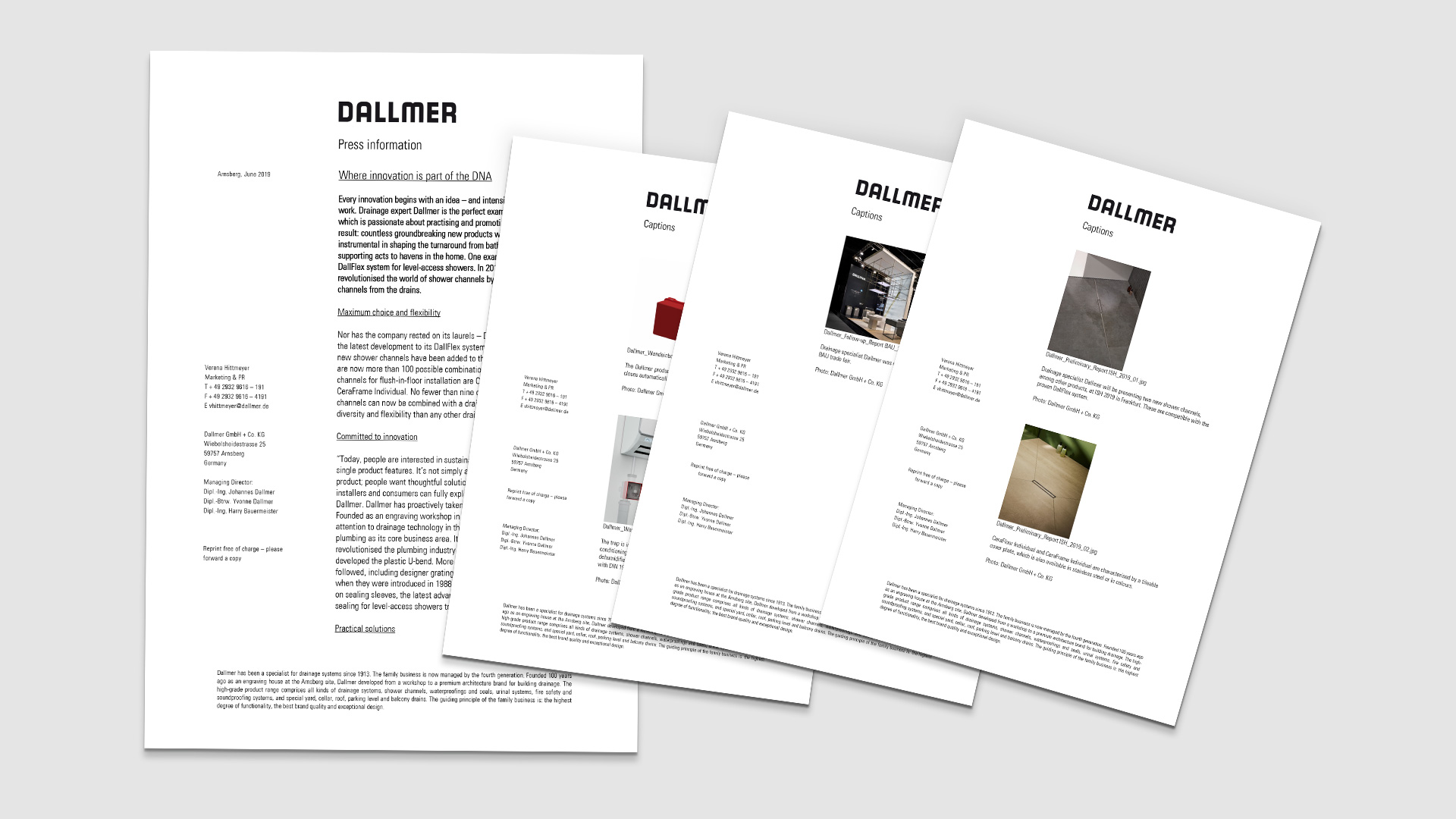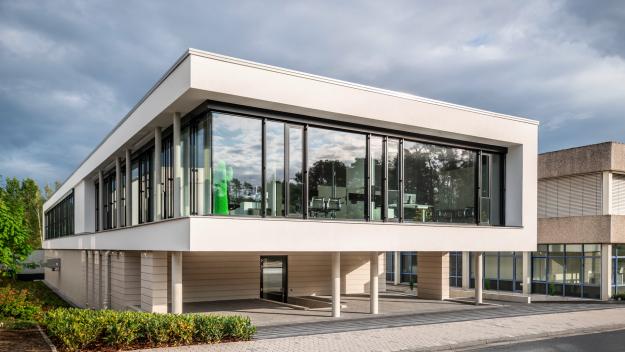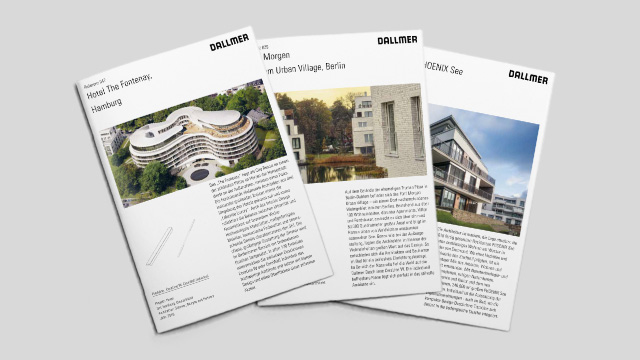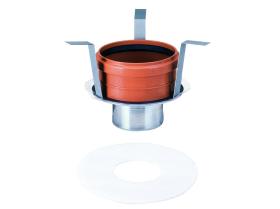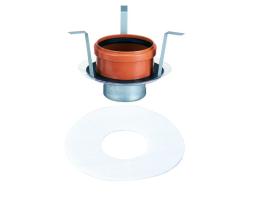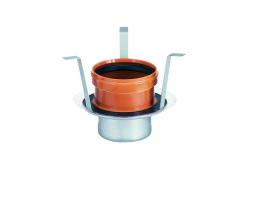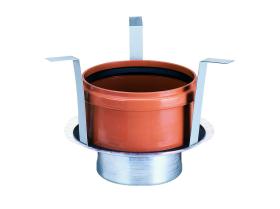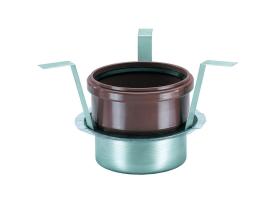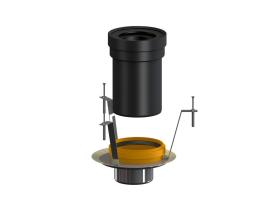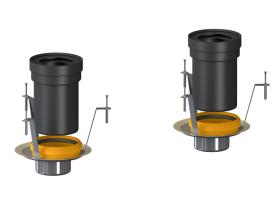Compact Knowledge – Fire insulation for floor and roof drains
At a glance
- Preventative fire insulation
The term for all organisational, construction and technical measures designed to prevent the occurrence and spread of fires. This includes the standard-compliant sealing of pipes and ceiling feed-throughs. - Pipe bushings
Fire insulating elements fitted with a swelling agent ensure that plastic pipes, drainage pipes, floor drains and roof drains are sealed in the event of fire.
- Fire resistance class
The fire resistance class of a component provides information on how long it can withstand a fire. The classification is defined in the standards DIN 4102-2 and DIN EN 13501-2. The resistance class must be verified by means of a suitable fire resistance test, which must be performed in accordance with the specifications of the standard DIN 4102 or DIN EN 1363 ff. - Fire insulation for flat roofs
Specially designed fire insulating elements are available for concrete roofs. However, the basic operating principle is always the same.
Why do we need fire insulation in drainage technology?
Within the context of preventive fire insulation, plastic floor drains with vertical outlets are regarded as pipe/ceiling feed-throughs that require sealing off. This is because if a fire breaks out, flames, smoke and heat can spread very quickly via the wastewater pipe and set fire to further floors of a building. The same applies to flat roofs. In this case, the fire can jump to the roof via the roof drains. In order to prevent this, it must be possible to professionally seal all feed-throughs of this type in compliance with the pertinent standards.
Design and functionality of fire insulating elements
Dallmer offers fire insulating structural elements for sealing off floor feed-throughs that can be installed without the need for tools. The core piece of this element is a fire insulating insert made of an intumescent material (material that foams in the event of a fire) which begins to foam at a heat of approx. 150°C. The volume of the material increases approx. 15/20-fold. This seals off the ceiling feed-through quickly, reliably and safely, thus preventing the spread of any heat, flames or smoke via this feed-through. Fire insulating structural elements all function according to the same principle, regardless of whether they are installed in the drainpipe of a level-access shower or in a flat roof drain.
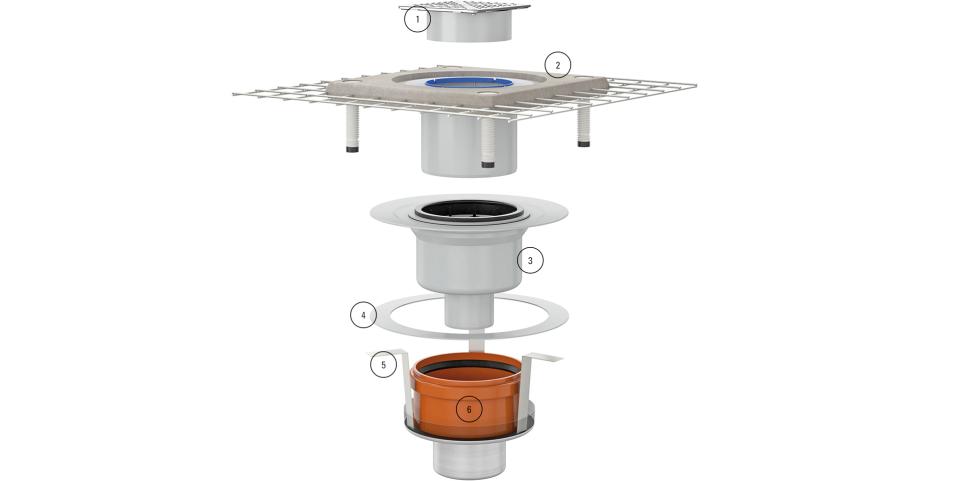
1. Insert with grating
2. Raising piece (CeraDrain version for bonded waterproofing shown here)
3.
Vertical drain body with outlet
4. Sound insulation collar
5. Mounting bracket and
installation aid for tool-free assembly
6. Fire and sound insulating element
Reference and labelling requirement
Whenever pipe bushing is installed, the acting company has a duty to inform the contracting authority in writing that the pipe bushing only offers effective fire insulation when the trap insert of the drain is filled with water. All pipe bushings must be marked underneath the ceiling feed-through with a fire safety label in the immediate vicinity of the installation. The marking must be clearly visible. In accordance with the stipulations of the General Building Approval (abZ), every fire insulating structural element is supplied to the installation engineer complete with a declaration of compliance and an information label. With this declaration of compliance, the company that manufactures the pipe bushing confirms that their pipe bushing complies with the provisions of the abZ. This declaration must be submitted to the client / site manager and added to the construction file.
Fire resistance classes
DIN 4102-2
and DIN EN 13501-2
Fire insulating structural elements are divided into different fire resistance classes. This classification is regulated by the German standard DIN 4102-2 and the European standard DIN EN 13501-2. In both cases, the classification is determined by the length of time a component can withstand the fire.
|
| DIN 4102-2 | DIN EN 13501-2 |
| These standards describe the fire resistance of a component or product using the following criteria: | F = Fire resistance duration |
R = Load capacity (Caution!
Depending on the context, R may also stand for "pipe bushing") |
| Unit of measurement: | Minutes – the value is always rounded down to the next
multiple of 30 | Minutes |
| These are divided into the following classes: | F 30 / 60 / 90 | R 15 / 20 / 30 / 45 / 60 / 90 / 120 / 180 / 240 / 360 E 15 / 20 / 30 / 45 / 60 / 90 / 120 / 180 / 240 / 360 I 15 / 20 / 30 / 45 / 60 / 90 / 120 / 180 / 240 / 360 |
Planners and architects must ensure that the fire resistance class of the selected fire insulating structural elements is appropriate for the roof where they are to be installed. Selecting a fire insulating element whose fire resistance class is too low will reduce the effectiveness of the ceiling fire resistance. Or in other words: a fire-resistant ceiling is of little use if the fire can spread via the piping. The table below shows the requirements of the Model Building Code and the Regional Building Code relating to the fire resistance of floor drains, depending on the building class.
Requirements relating to the fire resistance of floor drains as per the Model Building Code / Regional Building Code
| Building classes | GK 1 (a + b) | GK 2 | GK 3 | GK 4 | GK 5 | Special structures | |
| OKF = Upper edge of common room flooring from upper edge of foundation |
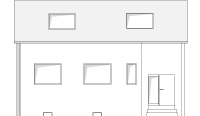
Detached buildings <= 7 m OKF |
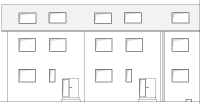
Buildings <= 7 m OKF |
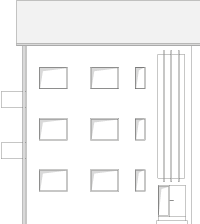
Other buildings <= 7 m OKF |
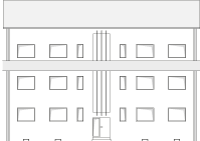
Buildings <= 13 m OKF |
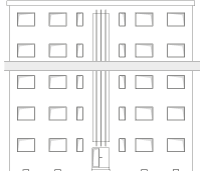
Other buildings <= 22 m OKF |
regardless of height and high-rise buildings >= 22 m OKF |
|
| Components in basements (ceilings), MBO § 31 (2) | 
F 30 |

F 30 |
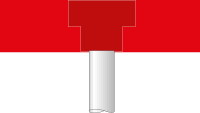
F 90, 3) |

F 90 |

F 90 |

F 90 / F 120, 2) |
|
| Components in upper floors (ceilings), MBO § 31 (1) | 
F 30 |

F 30 |

F 60 / F 90, 4) |

F 90 |

F 90 |
||
- According to § 40, there are no provisions requiring the sealing-off of floor drains in apartments and building units smaller than 400 m2 and with fewer than 2 floors (GK 1 (a+b)).*
- Special structures are subject to different requirements, details of which can be found in the special building regulations and special fire insulation concept, which form part of the building permit.
- In Hessen, basement ceilings are also subject to fire-retardant provisions.*
- As there are currently no bushings on the market for highly fire-retardant components, bushings for fire-resistant components must be installed.
Floor drains with sound insulation requirements
Floor drains in F 30 components with sound and fire insulating requirements
Floor drains in F 60 / F 90 / F 120 components with sound and fire insulating requirements
* Please
note:
The table assumes building class GK 1-5 of the Model Building Code 2002 in
order to facilitate the transition to the new classifications of the future Regional
Building Codes. The current Regional Building Codes shall apply until the new Regional
Building Codes based on the Model Building Code 2002 come into effect in all federal states.
Adherence to the table will generally cover all previous and all new requirements.
Verification of the respective fire resistance duration must be provided in the form of a certification of suitability for use, such as a General Building Supervisory Authority Test Certificate (abP) or a General Building Inspection Test Certificate (abZ).
Fire insulation for roof drains in concrete surfaces
If the roof drains and feed-throughs in ceilings with fire resistance duration requirements (F 30/60/90) are installed up to 5 m away from a rising external wall with openings, such as doors/windows, then it must be assumed that the components will be exposed to fire from above and below. The fire resistance duration of the feed-through must correspond to the fire resistance duration of the component in which it is installed. Dallmer offers fire insulation systems for flat roofs comprising a special fire insulating structural element that accommodates a standard roof drain 62 DN 70 with domed grate. These drains have full building authority approval (Z-19.17-1800), ensure a safe fire insulation solution R 30/60/90 with roof drains without water trap for solid flat roofs and are compatible with all standard types of roof waterproofing.
Standards and directives
The Model Building Code is published by the ministers and senators of the 16 federal states responsible for urban development, construction housing (ARGEBAU)
It is a standard and minimum building code, a kind of guideline to the Regional Building Code. § 14 regulates the fire insulation of engineered structures. The aim is to prevent the occurrence and spreading of fires.
Model Directive on the technical requirements for fire insulation with respect to conduit systems, issued by the German Institute for Construction Engineering (Deutschen Institut für Bautechnik - DIBt)
The MLAR explains how to achieve the (fire) safety goals specified by the Regional Building Code. It serves as a guideline for the planning and installation of conduits and drains in terms of preventative fire insulation. The LAR describes the requirements of conduits, including fixings and insulating materials, in conjunction with installation in emergency escape routes. The LAR aims to improve preventative fire insulation in conduit systems and help all involved to erect buildings to an appropriate and contractually agreed safety standard. The LAR defines the execution principles for the penetration of a vertical pipe or a floor/roof drain through a fire-resistant wall or ceiling. In this case, wall/ceiling feed-throughs must be in R 30/60/90/120 quality. The guideline also regulates how to carry out fire tests.
Floor, ceiling and roof drains are always the starting point of any drainage system and are considered an integral part of such a system as per DIN EN 12056 and DIN 1986-100. For that reason, they must also comply with the requirements of the conduit systems directive.
This standard refers to gravity drainage within buildings and specifications, including how drainage systems are to be planned and installed in order to ensure reliable protection against the spreading of fires. In buildings where pipes need to be fed through walls and ceilings that are subject to special requirements in terms of fire resistance, special measures are required as per national and international regulations.
This standard refers to the fire behaviour of components and materials. It defines the fire resistance classes of materials to be used in house technology and how the components and materials are to be tested.
European standard for the fire behaviour classification of building products and building elements. It serves a similar purpose at European level to DIN 4102 at German level.
Fire insulation of engineered structures - Regional Building Code Section 17 (such as the building code for North Rhine-Westphalia)
Specifies how buildings must be designed and which materials may be used in house technology in order to prevent the occurrence and spreading of fires.
Glossary
Fire insulation includes all measures that contribute towards the prevention and control of fires. Because this is a broad and complex field, different types of fire insulation are divided into the following categories:
- Preventive fire insulation
Concrete measures that contribute towards enabling a fire to be extinguished as quickly as possible and that help save people and animals. - Technical fire insulation
All technical systems that help fire prevention, fire detection and fire suppression – typical examples are smoke detectors, automatic extinguishing systems and smoke and heat extraction systems. - Structural fire insulation
This specifies the materials and components that may be used and how emergency escape routes and extinguishing systems are to be planned. - Organisational fire insulation
Fire officers and company training on the topic of fire insulation fall under the heading of organisational fire insulation. - Defensive fire insulation
All concrete measures aimed at preventing fires and stopping the spread of fires.
As per DIN 4102 and DIN EN 13501, building products are divided into different classes, depending on how long they retain their functionality when exposed to heat.
Relevant products
Downloads
Further downloads
Brochures, references, data sheets, etc. are available in our Download section.
Dated: Juli 2019
Show address
Contact
Dallmer GmbH + Co. KG
Wiebelsheidestraße 25
59757 Arnsberg
Germany
T. + 49 2932 9616 - 0
info@dallmer.de










